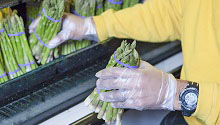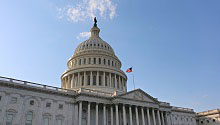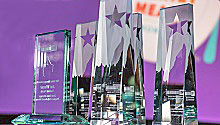This is the first installment in FMI's blog series on nonfoods in grocery stores. This series shares compelling insights derived from FMI’s Power of Nonfoods research among shoppers and industry perspectives to explore the role of nonfoods in the food retailing industry.
By: Steve Markenson, Vice President, Research & Insights, FMI

When I heard that we were launching a nonfoods community, my first reaction was "what?" Why would the food industry association care about nonfoods? As a researcher, I wanted to see the numbers. So, we pulled some data from the Circana database and saw that of the more than $1 trillion dollars in sales at food retailers, fully 25% or roughly $250 billion are for nonfood items.
Take a minute and think about your grocery shopping experiences. It is not just about food. There are many nonfood items in a food retailing store such as:
- Paper products
- Over-the-counter medications, oral health and other health care products
- Personal cleansing and hair care products
- Skin care, cosmetics and shaving products
- Laundry and household cleaning products
- Pet food and products
- Kitchen gadgets and array of seasonal items
The list goes on and on, but when you add it all up, these nonfood products generate more than $3 trillion in sales. That's $3,000,000,000! But only $250 billion (or less than 8%) are sold through grocery stores.
Why Not the Grocery Store?
Our first Power of Nonfoods research sought to understand the shopper perspective on these purchase decisions and to answer the critical question – Why not the grocery store? Some general themes emerged:
- Most shoppers think of grocery stores for food first and nonfoods are often not on their minds. As one shopper explained, "my grocery store is for food."
- Many shoppers are creatures of habit and stick to their established routine for these purchases. They often acknowledge not even going down the nonfood aisles on their grocery store trips.
- Shoppers often have the perception of nonfood items costing more or not offering good value at grocery stores versus other channels.
- Variety and selection, along with price/value, are seen as better at club stores and mass merchandisers.
- While most shoppers visit multiple stores in any given week, "one stop shopping" is seen as an advantage of the mass merchandisers and larger footprint stores.
Some considerations for overcoming these barriers:
- Coupons, BOGOs and promotions in the weekly circular (online or printed) are an effective way to get shoppers' attention especially during these inflationary times.
- Loyalty programs can be used to communicate with shoppers the availability of these programs and could support sales by offering larger or better rewards.
- Cost comparisons, where appropriate, with competitors could serve to change the perception that nonfood products cost more in food retailers.
- In-store signage has been acknowledged by many retailers to be effective and could be used to increase the awareness of nonfood items available and subsequent sales.
- Nonfoods items are often isolated in their own aisles. Mixing them in with appropriate food items or in higher trafficked areas can serve to increase awareness and sales.
Future blogs in this series will take a deep dive into some of the wide array of nonfood categories to explore shopper perspectives, industry perspectives and opportunities for food retailers in nonfoods.

 Industry Topics address your specific area of expertise with resources, reports, events and more.
Industry Topics address your specific area of expertise with resources, reports, events and more.
 Our Research covers consumer behavior and retail operation benchmarks so you can make informed business decisions.
Our Research covers consumer behavior and retail operation benchmarks so you can make informed business decisions.
 Events and Education including online and in-person help you advance your food retail career.
Events and Education including online and in-person help you advance your food retail career.
 Food Safety training, resources and guidance that help you create a company food safety culture.
Food Safety training, resources and guidance that help you create a company food safety culture.
 Government Affairs work — federal and state — on the latest food industry policy, regulatory and legislative issues.
Government Affairs work — federal and state — on the latest food industry policy, regulatory and legislative issues.
 Get Involved. From industry awards to newsletters and committees, these resources help you take advantage of your membership.
Get Involved. From industry awards to newsletters and committees, these resources help you take advantage of your membership.
 Best practices, guidance documents, infographics, signage and more for the food industry on the COVID-19 pandemic.
Best practices, guidance documents, infographics, signage and more for the food industry on the COVID-19 pandemic.
